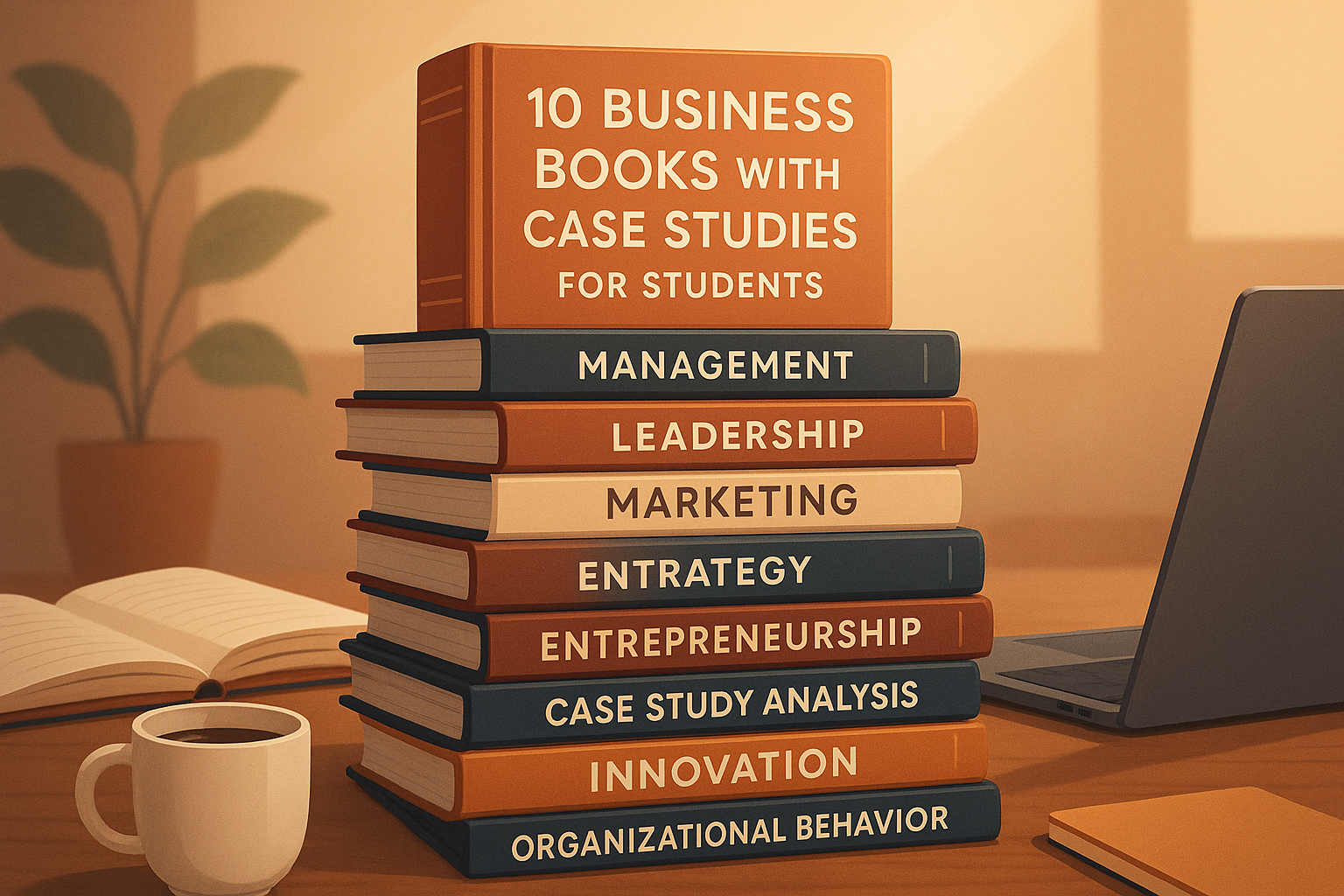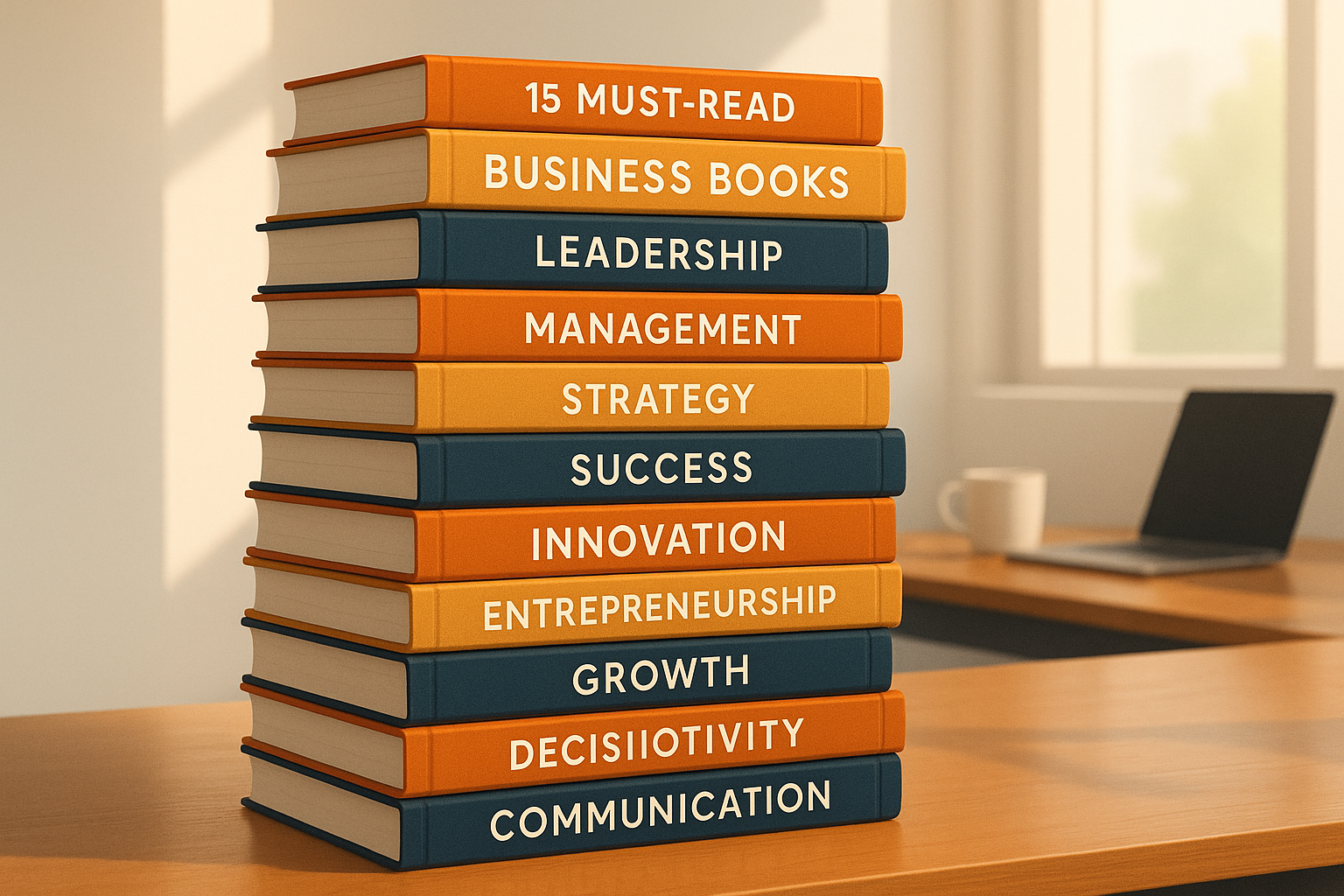Looking to implement circular economy practices? Start here! These 10 books provide clear strategies to reduce waste, optimize resources, and adopt sustainable business models. Whether you're in manufacturing, supply chain, or sustainability, these guides offer actionable insights to design circular systems, manage waste, and align with regulations.
Key Takeaways:
- Practical Guides: Learn to build closed-loop supply chains, track performance, and develop resource-efficient business models.
- Real-World Examples: Case studies from companies like Renault, Philips, and Coca-Cola showcase successful circular economy strategies.
- Tools & Frameworks: Discover tools like the "4R Framework" (Recover, Reuse, Regenerate, Redesign) and "Circular Value Index" to measure success.
- Industry-Specific Tips: Tailored advice for plastics, biodegradable waste, and more.
Quick Overview of the Books:
- Circular Economy Professional: Step-by-step guidance for integrating circular principles into operations.
- The Circular Economy: From Waste to Resource: Strategies for reclaiming and reusing materials.
- Circular Economy: From Waste Reduction to Value Creation: Turn waste into profit with the "Resource Value Mapping" framework.
- Mastering the Circular Economy: Transition from linear to circular models with risk management strategies.
- Plastics and Sustainability: Explore how recycled plastics can align with circular goals.
- Biodegradable Waste Management: Advanced methods to repurpose organic waste.
- Sustainable Plastics: Assess and implement sustainable plastic solutions using lifecycle analysis.
- What is the Circular Economy: A foundational guide to circular principles and their benefits.
- A World Without Trash?: Frameworks for zero-waste operations.
- The Circular Economy Handbook: Comprehensive strategies for business model innovation and value chain optimization.
Ready to make the shift? These books provide the knowledge and tools to start transforming your business today.
A Guide to Circular Economy: What Is It & How to Use It
1. Circular Economy Professional
The Circular Economy Professional book connects sustainable business concepts with practical applications. Written by experienced professionals, it serves as a go-to guide for those looking to integrate circular economy principles into their operations.
The book highlights three main areas:
- Strategic Implementation: Offers frameworks to analyze current linear processes and uncover circular opportunities, supported by case studies from real businesses.
- Financial Analysis: Provides tools to measure resource efficiency, calculate returns, assess costs, and evaluate potential risks.
- Operational Guidelines: Delivers step-by-step instructions for creating closed-loop supply chains, take-back programs, repair and refurbishment systems, and reverse logistics.
Packed with checklists, assessment tools, and decision-making frameworks, this resource is designed for immediate use. It also tackles common challenges like resistance from stakeholders, regulatory hurdles, and supply chain adjustments, offering practical solutions.
This book is particularly useful for professionals in manufacturing, supply chain management, or sustainability roles, offering actionable strategies to transform operations while maintaining profitability.
2. The Circular Economy: From Waste to Resource
The Circular Economy: From Waste to Resource provides a guide to transforming waste into something useful. It lays out strategies for companies to redesign their operations, focusing on better resource use and creating closed-loop systems.
The authors highlight three key changes needed for this transformation:
- Resource Optimization: Streamlining resource use to uncover ways to cut down on waste.
- Value Recovery: Developing systems to reclaim and reuse materials that are typically discarded, turning them into inputs for new processes.
- Process Innovation: Leveraging modern technologies to convert waste into usable resources, promoting more efficient and responsible practices.
The book includes practical advice and tools to help professionals evaluate waste streams, plan for improvements, and track progress as they adopt circular economy practices. With its focus on both technical execution and organizational change, it’s a helpful guide for operations managers, sustainability leaders, and business strategists looking to incorporate these principles into their workflows.
3. Circular Economy: From Waste Reduction to Value Creation
This guide shows how waste management can shift from being a cost center to a source of profit. Using the "Resource Value Mapping" framework, Renault has saved $220 million annually by repurposing 80% of end-of-life vehicles through 300 recycling partnerships. These strategies highlight a shift in how businesses approach waste and resources.
Key changes businesses are adopting:
- Turning Costs into Profits: Circular models can increase profit margins by 23%. For example, Interface Inc. transformed 173,000 tons of discarded fishing nets into carpet tiles, adding $50 million in annual revenue.
- Shifting from Linear to Circular Systems: Philips' "pay-per-lux" model lets customers lease lighting services instead of buying bulbs. This approach cuts material use by 50% while boosting profitability.
The book also introduces practical tools like the "Circular Value Index", which evaluates success across three areas:
| Metric | Description | Industry Example |
|---|---|---|
| Material Productivity | Revenue per kilogram of resources | - |
| Cycling Rates | Percentage of materials reused | 90% (Caterpillar example) |
| System Collaboration | Cross-industry partnerships | 12+ partners typical |
AI-driven platforms for material matching could unlock $4.5 trillion in global circular opportunities by 2030. Google's Circular Economy Data Hub, for instance, has connected 12,000 companies for industrial collaboration since 2023.
The author also presents the "4R Framework" (Recover, Reuse, Regenerate, Redesign), developed from 150 corporate trials. This framework offers actionable strategies for tackling common challenges like misaligned incentives and regulatory hurdles, making it a must-read for operations managers and sustainability leaders.
4. Mastering the Circular Economy
This book serves as a guide for professionals transitioning from traditional linear models to more sustainable circular practices. It addresses common challenges, introduces a readiness framework, and lays out strategies for planning effective changes.
Key topics include risk management, performance measurement, and strategic planning. By combining technical strategies with a focus on organizational culture, the book offers a hands-on approach to making sustainable changes a reality.
Its structured framework paves the way for exploring practical applications in future titles.
5. Plastics and Sustainability: Grey is the New Green
Dr. Jane Thompson's book highlights how effective lifecycle management can make plastics part of a sustainable future. It focuses on how plastics can align with circular economy goals through smarter practices and real-world applications.
The book introduces a compelling idea: grey, the natural color of recycled plastics, has become a symbol of sustainability. Through case studies, it shows how leading companies are adopting this change. For example, Reckitt Benckiser launched its Finish Quantum Ultimate detergent tubs in 2019, incorporating 30% post-consumer recycled grey polypropylene. Within six months, 78% of consumers recognized the brand’s sustainability efforts. This shift is backed by solid data.
The Ellen MacArthur Foundation’s 2024 study further supports this, revealing that redesigning plastic packaging could reduce global virgin plastic use by 20% by 2040.
Key Strategies for Circular Plastic Integration
The book outlines three strategies for incorporating plastics into circular supply chains, with real-world examples and measurable impacts:
| Strategy | Example | Impact |
|---|---|---|
| Chemical Recycling | Eastman Chemical's molecular recycling | Over 100 million lbs/year of waste converted |
| Extended Producer Responsibility | California SB 54 law | 65% packaging reduction by 2032 |
| Bio-based Alternatives | Coca-Cola's PlantBottle | 50% lower greenhouse gas emissions compared to traditional PET |
The Benefits of Grey PCR Plastics
The analysis highlights the advantages of using grey post-consumer recycled (PCR) plastics. Producing these materials requires 50% less energy than virgin plastic manufacturing. Additionally, grey plastics are 100% detectable in recycling systems, unlike black plastics, which many sorting systems cannot identify. This makes grey plastics a practical and efficient choice for sustainability.
Consumer perception also plays a role. Research shows that 92% of consumers associate grey plastic packaging with environmental responsibility.
Practical Tools for Businesses
For businesses looking to adopt circular plastic strategies, the book provides actionable tools like ROI calculation methods and material flow analysis templates. It also includes insights from 23 Chief Sustainability Officers, offering advice on overcoming common challenges during implementation.
Dr. Thompson wraps up with a strong business case for circular plastic models. She references a McKinsey report projecting $200 billion in annual savings by 2040, alongside examples like Unilever's 15% cost savings through PCR integration. These examples underline the financial and environmental benefits of embracing circular plastics.
sbb-itb-1ae7b2a
6. Biodegradable Waste Management in the Circular Economy
This section focuses on methods for turning biodegradable waste into valuable resources, shifting away from traditional disposal methods. It highlights the role of advanced waste treatment technologies and coordinated policies in achieving this transformation.
Advances in Waste Processing Technologies
The book discusses several cutting-edge methods for handling biodegradable waste:
- Biological digestion: Converts organic materials into renewable energy sources.
- Composting: Speeds up the natural breakdown of organic waste.
- Enzymatic treatments: Enhances the efficiency of waste conversion.
These approaches show how biodegradable waste can be effectively repurposed, paving the way for broader circular waste systems.
Coordinated Systems and Policy Efforts
The guide underscores the importance of combining technology with strategic initiatives, such as:
- Automated monitoring tools: Improve the efficiency of waste management operations.
- Policy support and community involvement: Encourage widespread adoption of sustainable practices.
These elements work together to create a more sustainable approach to managing biodegradable waste.
7. Sustainable Plastics: Environmental Assessments
Environmental assessments play a key role in integrating plastics into a circular economy. This section outlines how to evaluate sustainable plastic solutions effectively. Start by understanding the life cycle analysis framework to structure your assessments.
Life Cycle Analysis Framework
A life cycle analysis helps evaluate plastics by focusing on:
- The use of raw materials and energy consumption
- Manufacturing processes and related emissions
- Recyclability, biodegradability, and disposal options
- Carbon emissions and overall ecological impact
This framework provides a structured way to measure and understand the environmental footprint of plastics.
Assessment Tools and Methodologies
Several tools can help you assess environmental impact effectively:
- Material flow analysis: Tracks the movement of plastic materials throughout their lifecycle.
- Impact measurement: Quantifies environmental effects using standardized metrics.
- Alternative evaluation: Compares the performance of sustainable materials against consistent criteria.
Practical Implementation Guidelines
Follow these steps to put environmental assessments into action:
-
Initial Assessment
Begin by evaluating your current plastic usage. Analyze material types, quantities, and disposal methods to establish a baseline for environmental impact. -
Alternative Analysis
Explore sustainable alternatives by considering:- Material properties and performance
- Production needs
- Cost factors
- Environmental advantages
-
Implementation Strategy
Create a detailed plan for transitioning to sustainable materials. Include timelines, potential challenges, and metrics to measure success.
Future Considerations
Keep an eye on emerging trends that could shape the future of sustainable plastics:
- Bio-based materials: Explore plant-based alternatives as a replacement for traditional plastics.
- Chemical recycling: Assess advanced recycling technologies that break down plastics into reusable components.
- Circular design: Incorporate sustainability principles into the early stages of product development.
8. What is the Circular Economy
The circular economy offers a new way to manage resources, moving away from the traditional "take, make, dispose" model. As defined by the Ellen MacArthur Foundation, it focuses on three main principles: eliminating waste and pollution, keeping materials and products in use, and restoring natural systems. Here's a closer look at how this approach delivers economic and environmental advantages.
Key Components
At its core, the circular economy relies on closed-loop systems to maximize resource value. Unlike linear models, which discard 91.4% of materials after one use, circular systems aim to extend the life of resources by 5–10 times through reuse and remanufacturing.
A good example is IKEA's 2020 furniture buy-back program. By refurbishing and reselling 45 million used items annually, the company retained 92% of product value. This approach highlights how circular strategies can benefit both the environment and businesses.
Economic and Environmental Impact
| Impact Area | Linear Model (Current) | Circular Economy Potential |
|---|---|---|
| CO₂ Emissions | 55Gt annually | 39% reduction (22.8B tons) |
| Material Use | 2.1B tons/year (EU) | 32% reduction by 2030 |
| Resource Value | $10T annual loss | 14–18% cost savings |
Business Implementation
Companies are already applying circular principles. For example, Adidas developed the UltraBoost DNA Loop shoes, which achieved a 96% material recovery rate. By using a single-material design, the shoes maintain performance while supporting circularity.
Technology’s Role
Technology plays a critical role in enabling circular systems. Blockchain now tracks 98% of material flows within industrial networks, while AI-powered sorting systems ensure 99% purity in recycling streams. These advancements make it easier for businesses to adopt circular practices.
Current State and Future Outlook
As of 2021, only 8.6% of the global economy followed circular principles. However, regulations like the EU's Circular Economy Action Plan, which requires 65% municipal waste recycling by 2035, are pushing for broader adoption. The World Economic Forum predicts that by 2030, circular models will be 23% more cost-efficient than linear ones.
9. A World Without Trash?
This book challenges the way we think about waste management, offering businesses a guide to transitioning toward a zero-waste, circular economy. It provides a framework for rethinking operations, aligning with broader circular economy strategies.
The book emphasizes that waste isn't an unavoidable outcome - it’s a problem that can be addressed with smarter practices. It encourages companies to use sustainable materials, streamline processes, and collaborate across industries. By connecting economic growth with environmental accountability, it gives professionals actionable steps to incorporate circular economy principles into their daily operations.
10. The Circular Economy Handbook
The Circular Economy Handbook serves as a guide for businesses looking to adopt circular economy principles. It offers strategies to transition from traditional linear models to circular approaches, combining ideas from earlier works into practical steps.
The book highlights three key focus areas:
- Business Model Innovation: Adjust operations to minimize waste while maintaining profitability.
- Value Chain Optimization: Develop systems that reuse resources efficiently.
- Stakeholder Collaboration: Build partnerships across industries to create effective circular systems.
These areas provide actionable insights, blending innovation, resource efficiency, and collaboration to support sustainable business practices.
Next Steps
Ready to put these strategies into action? Here's how you can begin transforming your organization.
Start with Assessment and Strategy
Take a close look at your current operations. Identify areas where you can cut waste and make better use of resources. From there, create a roadmap that aligns with your organization's strengths and future goals.
Implementation Framework
1. Resource Optimization
Find ways to improve your supply chain by focusing on:
- Recovering and reusing materials
- Improving energy efficiency
- Conserving water
- Establishing closed-loop systems
2. Business Model Innovation
Consider reshaping your business model with approaches like:
- Offering products as services
- Implementing reverse logistics
- Using sharing platforms
- Developing remanufacturing systems
3. Stakeholder Engagement
Work closely with key players in your value chain:
- Bring suppliers into the fold
- Train employees to adapt to new processes
- Educate customers on your initiatives
- Collaborate with industry partners to drive change
These steps will help you tailor solutions for your specific industry.
Industry-Specific Applications
| Industry | Focus Areas | Implementation Strategies |
|---|---|---|
| Manufacturing | Material Recovery | Design for disassembly, Remanufacturing programs |
| Retail | Product Lifecycle | Take-back programs, Packaging optimization |
| Technology | E-waste Management | Modular design, Repair services |
| Construction | Resource Efficiency | Material recycling, Waste reduction |
Measuring Progress
Keep track of your efforts by using key performance indicators (KPIs) like:
- Percentage of materials recycled
- Metrics for waste reduction
- Gains in resource efficiency
- Cost savings from circular practices
Shifting to a circular economy is an ongoing process that demands continuous effort and learning.
FAQs
What are the best ways for businesses to track the success of their circular economy efforts?
Measuring the success of circular economy initiatives requires businesses to focus on key metrics that reflect their sustainability goals. Some effective ways to track progress include:
- Resource Efficiency: Monitor reductions in material usage, waste generation, and energy consumption.
- Recycling and Reuse Rates: Track the percentage of materials or products that are recycled or reused within your operations.
- Cost Savings: Evaluate financial savings achieved through reduced waste disposal costs, energy efficiency, or material recovery.
- Carbon Footprint: Measure changes in greenhouse gas emissions to assess environmental impact.
By combining these metrics with regular reviews and stakeholder feedback, businesses can gain a clearer picture of how well their circular economy strategies are performing and identify areas for improvement.
What challenges do companies face when shifting from a linear to a circular business model, and how can they address them?
Transitioning from a linear to a circular business model can be complex and comes with several challenges. Companies often face high upfront costs for redesigning products, implementing new systems, and adapting supply chains. Resistance to change within the organization and among stakeholders can also slow progress. Additionally, finding reliable partners for recycling, remanufacturing, or material sourcing can be difficult.
To overcome these obstacles, businesses can start by educating their teams about the benefits of circular practices and fostering a culture of innovation. Collaborating with industry experts, investing in research, and leveraging government incentives for sustainability can also ease the transition. Starting small with pilot projects and scaling gradually allows companies to refine their processes while minimizing risks.
Are the strategies and principles in these circular economy books relevant for small businesses, or are they primarily designed for larger companies?
Yes, the strategies and principles discussed in these circular economy books can often be applied to both small businesses and larger corporations. While some concepts may focus on large-scale operations, many of the ideas, such as waste reduction, resource efficiency, and sustainable innovation, are adaptable to businesses of any size.
Small businesses, in particular, can benefit from these books by learning how to implement cost-effective, sustainable practices that align with their unique operations. The key is to tailor the strategies to your specific business needs and scale.


